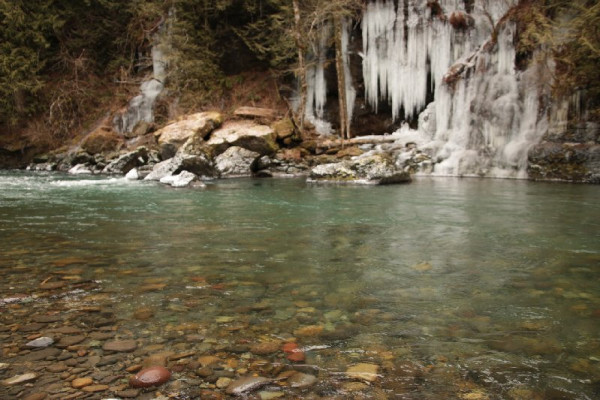Background:
High up in the Mt. Baker Wilderness, the three forks (North, Middle, and South) of the Nooksack River originate. The river runs approximately 75 miles and drains roughly 786 square miles of this area of the Cascade Range. The three forks combine to form the mainstem east of Deming, WA. The mainstem flows into Bellingham Bay in the Strait of Georgia. Much of the lower river flows through fertile agricultural land. There are several tributaries that feed into the three forks and the mainstem that provide critical habitat for several fish species.
There are seven salmon species found in this basin including chum, pink, Coho, Chinook, and sockeye. Steelhead, coastal cutthroat, mountain whitefish, and bull trout are also native to this basin. The fall run of Chinook salmon are an introduced run that did not historically exist in the Nooksack.
As with many of our northwest streams, there are a host of issues that face the fish species in this area. The intense agricultural activities of the lower river, such as dairy operations and raspberry farms, have the typical effects of elevated levels of nitrogen and phosphorous. There is also the possibility of negative impacts on the mainstem from the conversion of agricultural and undeveloped land for commercial and residential use. Portions of the river and its tributaries have a specific concern with fecal coliform bacteria due to human and animal waste making its way to the river. This could be from waste management plants, leaking septic systems, and/or livestock grazing in or near the river. Hydroelectric facilities and water diversion effects add to the issues facing these species. Timber activities in the upper river have also affected the river with loss of stream side vegetation and siltation, for example.
Hatcheries and harvest issues also pose multiple threats to these salmonids and related species. Maintaining “healthy” fish stocks is heavily monitored in this region. Many aspects of the commercial and sport fishery are managed by fisheries managers quite closely, but there are always ways to slip through the cracks. Hatcheries have affected the threatened Chinook runs through negative interactions between native runs and hatchery runs. Genetic integrity is at risk with the early Chinook in the system interbreeding with stray hatchery fish. Competition for food and habitat between natives and hatchery fish is another concern.
There has been quite a bit of recovery work in the basin by local groups and fortunately, in recent years, many of the different interested parties have reached across the table to work together to improve the health of this river.
